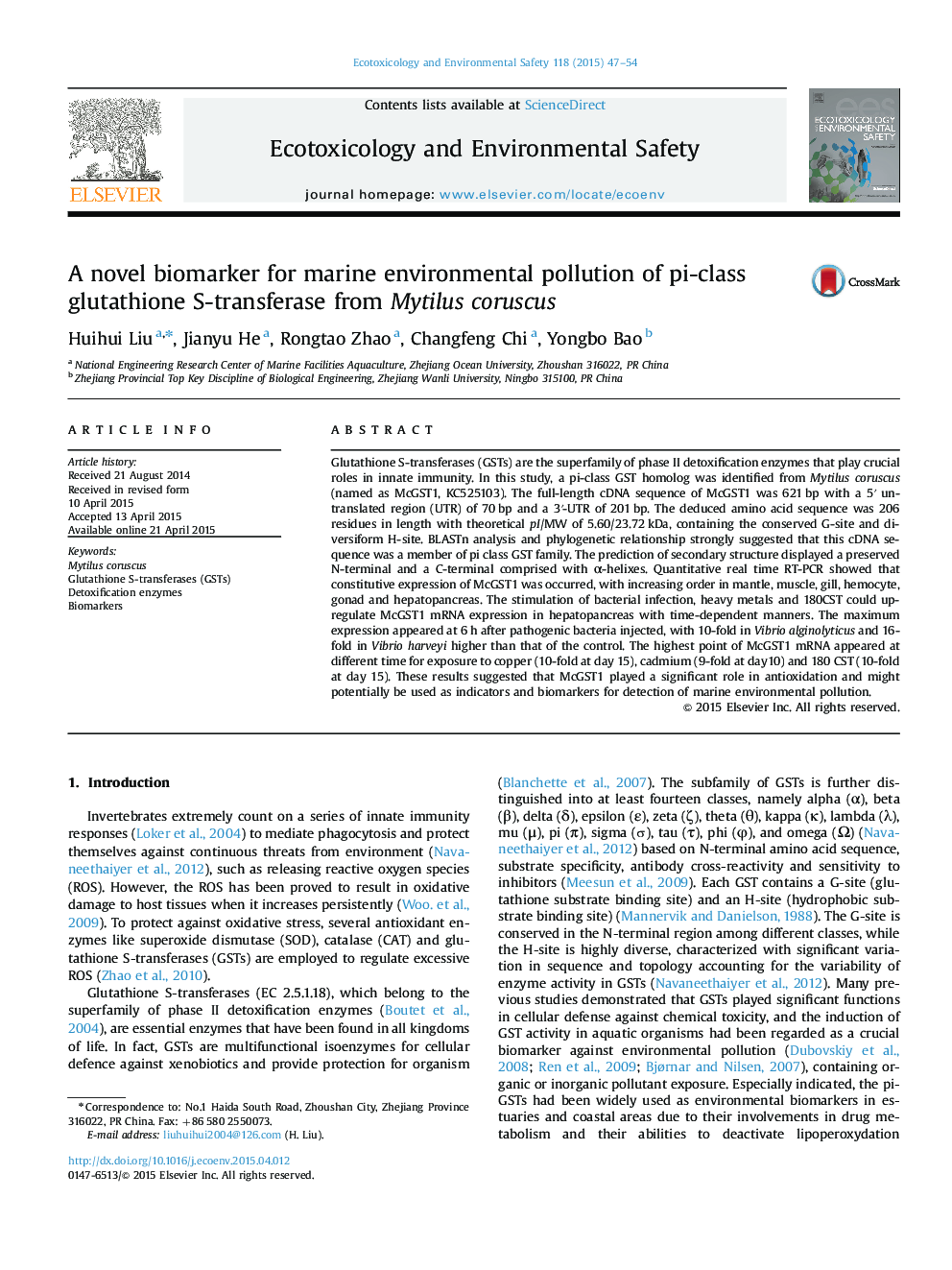| Article ID | Journal | Published Year | Pages | File Type |
|---|---|---|---|---|
| 6312128 | Ecotoxicology and Environmental Safety | 2015 | 8 Pages |
â¢A novel Glutathione S-Transferases (McGST1) was identified from Mytilus coruscus.â¢McGST1 mRNA was obviously up-regulated under stress of pathogen and heavy metals.â¢The expression of McGST1 mRNA was time-dependent under stress of 180 CST.â¢McGST1 might potentially be used as a marine pollution indicator.
Glutathione S-transferases (GSTs) are the superfamily of phase II detoxification enzymes that play crucial roles in innate immunity. In this study, a pi-class GST homolog was identified from Mytilus coruscus (named as McGST1, KC525103). The full-length cDNA sequence of McGST1 was 621 bp with a 5ʹ untranslated region (UTR) of 70 bp and a 3ʹ-UTR of 201 bp. The deduced amino acid sequence was 206 residues in length with theoretical pI/MW of 5.60/23.72 kDa, containing the conserved G-site and diversiform H-site. BLASTn analysis and phylogenetic relationship strongly suggested that this cDNA sequence was a member of pi class GST family. The prediction of secondary structure displayed a preserved N-terminal and a C-terminal comprised with α-helixes. Quantitative real time RT-PCR showed that constitutive expression of McGST1 was occurred, with increasing order in mantle, muscle, gill, hemocyte, gonad and hepatopancreas. The stimulation of bacterial infection, heavy metals and 180CST could up-regulate McGST1 mRNA expression in hepatopancreas with time-dependent manners. The maximum expression appeared at 6 h after pathogenic bacteria injected, with 10-fold in Vibrio alginolyticus and 16-fold in Vibrio harveyi higher than that of the control. The highest point of McGST1 mRNA appeared at different time for exposure to copper (10-fold at day 15), cadmium (9-fold at day10) and 180 CST (10-fold at day 15). These results suggested that McGST1 played a significant role in antioxidation and might potentially be used as indicators and biomarkers for detection of marine environmental pollution.
